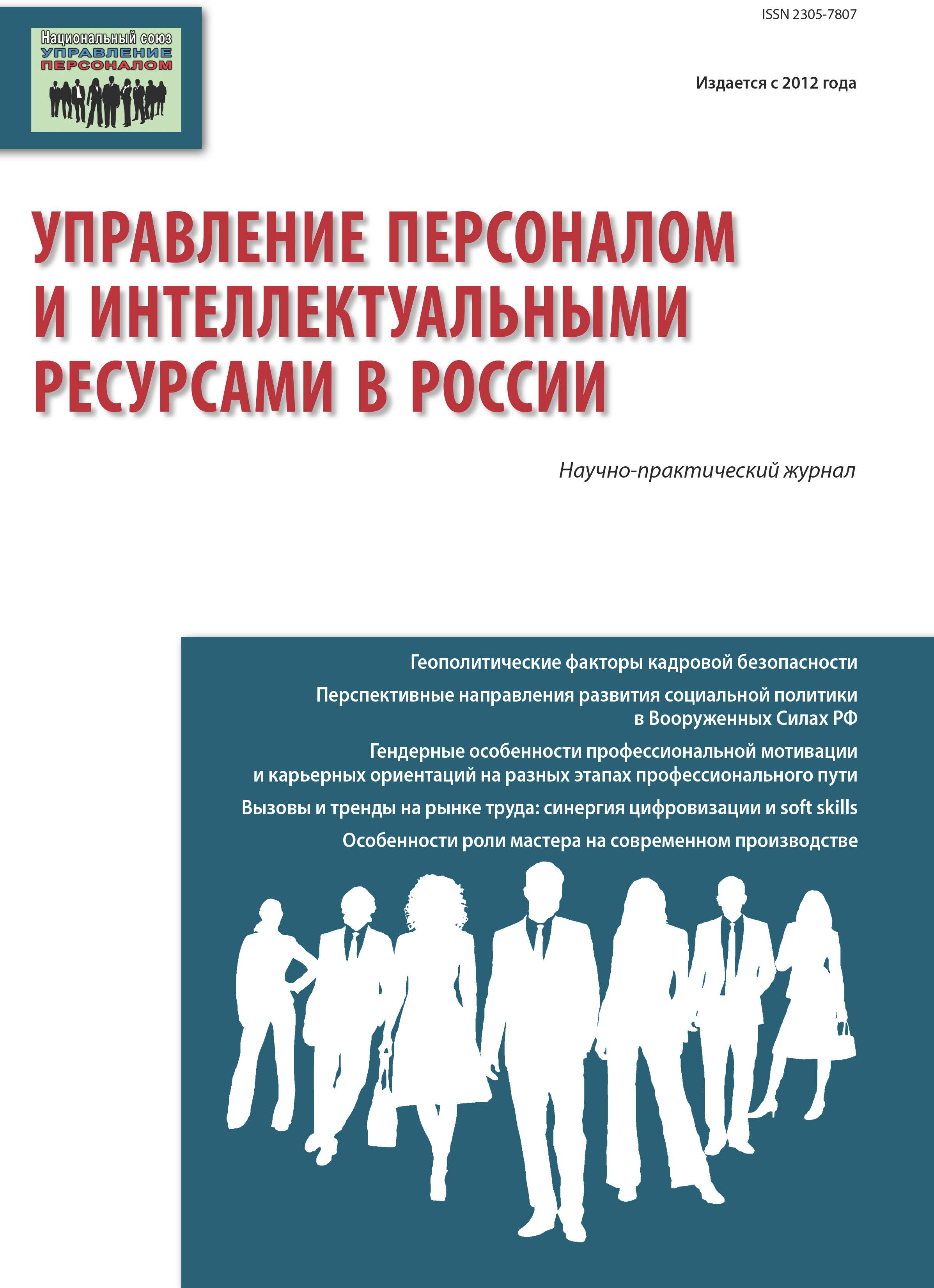Москва, Россия
В статье рассматриваются вопросы использования различных факторов мотивации с целью удержания персонала в организации. Актуальность темы исследования обусловлена тем, что сложность сегодняшней бизнес-среды постоянно меняет настройки, в которых организации конкурируют за выживание, в результате чего особое внимание уделяется приобретению и сохранению качественных сотрудников, поскольку это рассматривается как ключевой фактор, лежащий в основе организационного успеха. Хотя для управления бизнесом требуется много других ресурсов, персонал является наиболее ценным ресурсом, который определяет успех каждой организации. В качестве основных факторов, влияющих на удержание персонала, в статье рассмотрены вознаграждения и компенсация, управление карьерой, баланс между работой и личной жизнью, вовлеченность персонала, удовлетворенность работой. Практическая значимость исследования заключается в том, что его результаты помогут организациям использовать как современные, так и традиционные методы управления человеческими ресурсами с целью удержания сотрудников.
мотивация и стимулирование, удержание персонал, вознаграждения и компенсация, управление карьерой, баланс между работой и личной жизнью, вовлеченность персонала, удовлетворенность работой
1. Армстронг М. Оплата труда: Практическое руководство по построению оптимальной системы оплаты труда и вознаграждения персонала / Пер. с англ. под науч. ред. Т.В. Герасимовой / М. Армстронг, Т. Стивенс. - Днепропетровск: Баланс Бизнес Букс, 2007. - 98 c.
2. Arthur J. Effects of human resource systems on manufacturing performance and turnover // Academy of Management Journal, 1994, 37(3). - PP. 670-687.
3. Beauregard T.A., Henry L.C. Making the link between work-life balance practices and organisational performance. // Human Resource Management Review, 2009, № 19(1). - PP. 9-22.
4. Becker B. E., Gerhart, B. The impact of human resource management on organisational performance: progress and prospects. // Academy of Management Journal, 1996, № 39. - PP. 779-801. EDN: https://elibrary.ru/BWMNZB
5. Bhatnagar J. Talent management strategy of employee engagement in Indian ITES employees: key to retention. // Employee Relations, 2007, № 29(6). - PP. 640-663.
6. Bratton, J., & Gold, J. Human resource management: theory and practice. (3rd ed.), - Hampshire: Palgrave Macmillan, 2009. - 672 p.
7. Browne B.A. Gender and preferences for job attributes: a cross cultural comparisons. // Sex Roles, 1997, № 37ю - PP. 61-71. EDN: https://elibrary.ru/EQSHEN
8. Cho S., Woods R., Jang S., Erdem M. Measuring the impact of human resource management practices on hospitality firms‟ performances. //International Journal of Hospitality Management, 2006, № 25(2). - PP. 262-277.
9. Deery M. Talent management, work-life balance and retention strategies. // International Journal of Contemporary Hospitality Management, 2008, № 20(7). - PP. 792-806.
10. Ellis C. M., Sorensen A. (2007). Assessing employee engagement: the key to improving productivity. // Perspectives, 2007, № 15(1). - PP. 315-336.
11. Estes S.B., Michael J. Work-family policies and gender inequality at work: A Sloan Work and Family Encyclopedia entry. - URL: http://wfnetwork.bc.edu/encyclopedia_entry.php?id = 1230 & area = Al (дата обращения: 23.04.2019).
12. Gallup. - URL: http://gmj.gallup.com. (дата обращения: 23.12.2020).
13. Hall D.T. Dilemmas in linking succession planning to individual executive learning. // Human Resource Management, 1986, № 25. - PP. 235-265.
14. Khan M.A. Effects of human resource management practices on organisational performance - an empirical study of oil and gas industry in Pakistan. // European Journal of Economics, Finance and Administrative Sciences, 2010, № 24. - PP. 158-175. EDN: https://elibrary.ru/PMTDCN
15. Lee C.H., Bruvold N.T. Creating value for employees: investment in employee development. // International Journal of Human Resource Management, 2003, № 14. - PP. 981-1000.
16. Mitchell T.R., Holtom B.C., Lee T.W. How to keep your best employees: Developing an effective retention policy. // Academy of Management Executive, 2001, № 15. - PP. 96-108. EDN: https://elibrary.ru/DQONWB
17. Parker O., Wright L. Pay and employee commitment: the missing link. // Ivey Business Journal, 2000, № 65. - PP. 70-79.
18. Samuel M.O., Chipunza C. Employee retention & turnover: using motivational variables as a panacea. // African Journal of Business Management, 2009, № 3(8). - PP. 410-415.
19. Schermerhorn Jr. J.R., Hunt J.G., Osbom R.N., Uhv-Begin M. Organizational Behavior (11th ed.). - Pennsylvania USA:.John Wiley & Sons Inc., 2011. - 648 p.
20. Sempane M., Rieger H., Roodt G. Job satisfaction in relation to organisational culture. // South African Journal of Industrial Psychology, 2002, № 28(2). - PP. 23-30.
21. Shaw J.D., Gupta N., Delery J.E. Alternative conceptualizations of the relationship between voluntary turnover and organisational performance. // Academy of Management Journal, 2005, № 84. - PP. 50-68.






